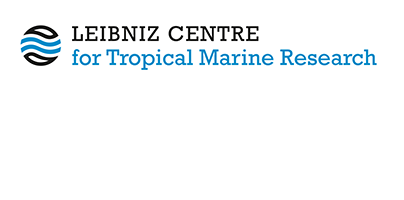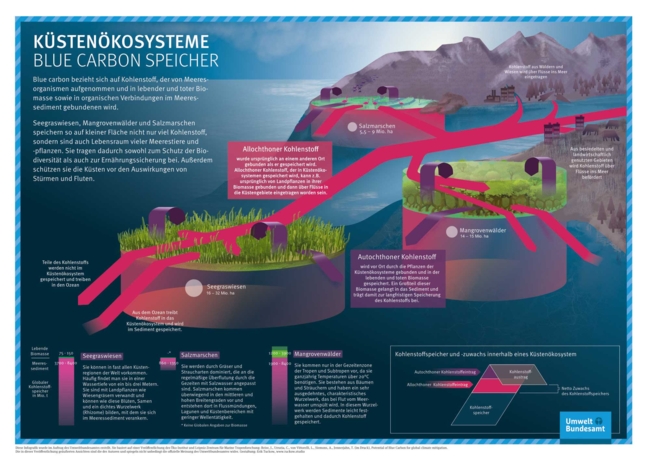Seagrass meadows, mangrove forests and salt marshes can absorb and store up to 216 million tonnes of carbon dioxide from the atmosphere worldwide every year. Over centuries to millennia, they form an enormous carbon store of up to 22,000 million tonnes of carbon in marine sediments. At the same time, they make an important contribution to the preservation of biodiversity in the oceans and on the coasts, help to protect against storm surges and coastal defences and thereby contribute to the nutrition and safety of millions of people. This is shown in a research report by Oeko-Institut and the Leibniz Centre for Tropical Marine Research and commissioned by the German Environment Agency. The report examines the importance of coastal ecosystems for global climate protection.
Carbon that can be absorbed and stored by marine organisms is often referred to as blue carbon. Judith Reise, an expert on carbon storage in natural ecosystems at Oeko-Institut, emphasizes the importance of blue carbon ecosystems: “Too little attention is often paid to coastal and ocean ecosystems. Our study shows the potential that these habitats can have for global climate protection.”
Marine ecosystems store carbon
The ecosystems studied can store different amounts of carbon. Seagrass meadows, which occur on almost all coasts in water depths of one to three metres, can store around 75 to 150 million tonnes (Mt) of carbon in the plants alone over the centuries and millennia; in addition, they store up to 8,400 Mt of carbon in organic compounds in the sediments on the seabed.
Mangrove forests in the tropics and subtropics are adapted to the rising and falling water levels with the tides and can store 1,200 to 3,900 Mt of carbon in their biomass and up to 8,400 Mt in the marine sediment. Salt marshes, i.e. areas in northern latitudes that are exposed to high and low tides, can store a total of up to 1,350 Mt of carbon.
Marine diversity secures coasts and food supply
In addition, the coastal zones of the oceans are particularly important for safeguarding biodiversity and for the survival of humans. The majority of marine animals spend their youth in coastal ecosystems because they offer them protection. Mangroves and the like thus make a significant contribution to feeding almost half of humanity, which lives on the coasts and obtains its food there. Last but not least, functioning coastal zones buffer storm surges and thus contribute effectively to the protection of coastal cities.
The study shows that these habitats are currently particularly at risk due to mismanagement and pollution. Numerous factors contribute to the destruction of coastal ecosystems: For example, when coastal aquacultures are established and large quantities of antibiotics and other chemicals are discharged into the sea. The seabed and seagrass beds in particular are destroyed by fishing with trawl nets. The discharge of fertiliser from agricultural land via rivers is also a problem as it disrupts the sensitive nutrient cycles in coastal ecosystems.
"In this way, important carbon reservoirs are lost, which are urgently needed to bind climate-damaging greenhouse gases from the atmosphere," states Judith Reise, "at the same time, we are destroying the basis of life for many plants and animals and, not least, jeopardising ourselves."
Scientific leaflet on "Blue Carbon - Carbon storage in coastal ecosystems" by Oeko-Institut
Ansprechpartnerin am Öko-Institut





